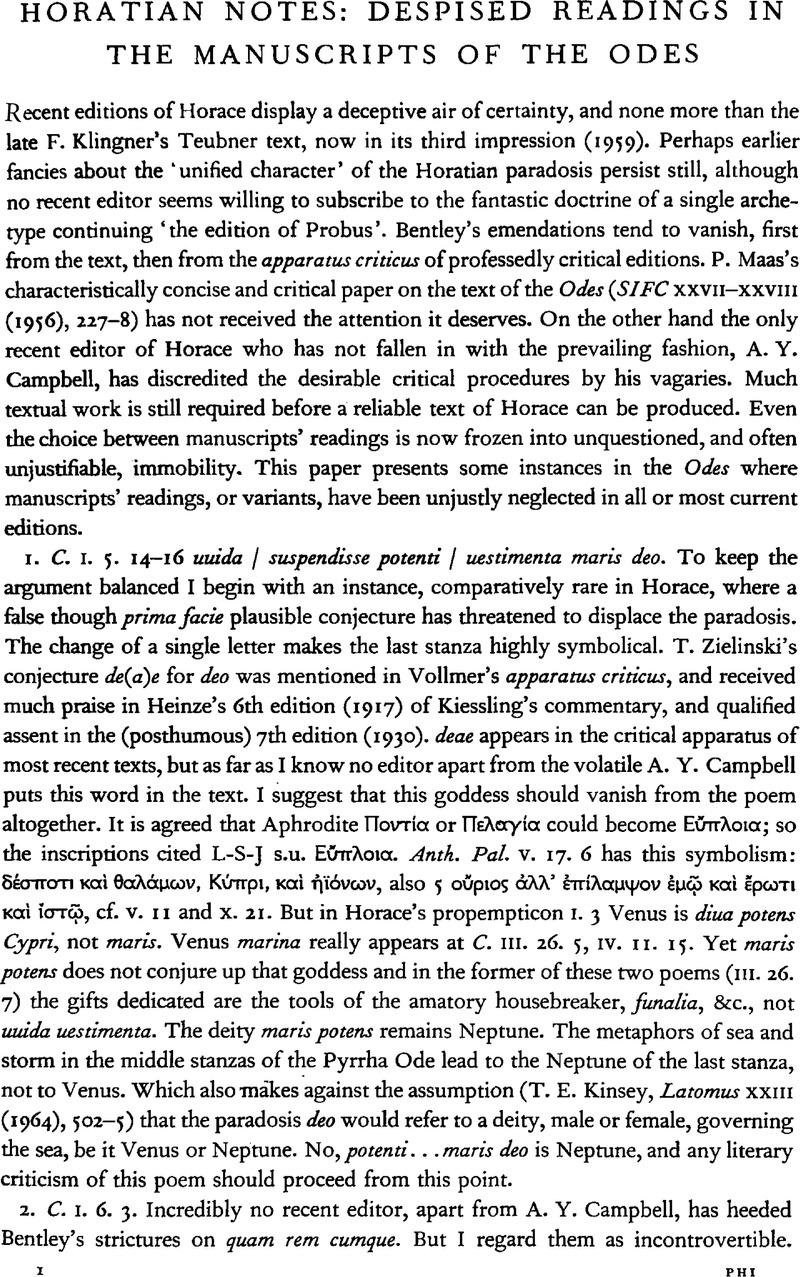No CrossRef data available.
Article contents
Horatian Notes: Despised Readings in the Manuscripts of the Odes
Published online by Cambridge University Press: 24 January 2019
Abstract

Information
- Type
- Other
- Information
- Copyright
- Copyright © The Author(s). Published by Cambridge University Press 1969
References
Page 3 note 1 I count 21 instances of elision before et at line-endings in Ödes I-HI. The only unelided instance of et in that position (apart from the dubious case discussed above) is mitigated in the same way as fors et would be : C. m. 11. 5 ends nunc et, two monosyllables. But two monosyllables form as many as one half of all cases of monosyllables at the end of the hexameter, cf. J. Hellegouarc'h, Le monosyllabe Jans l'hexametre latin (1964), 55-61, diagram p. 52.
Page 6 note 1 There is in turn a similarity between C. IV. 9. 1 and II. 4. 1 ne sit ancillae übi amor pudori, which I leave aside since the latter passage contains a 3rd, not a 2nd, person verb. But n. 4. 1 may be compared with one of the instances from the A.P. (406), mentioned earlier in passing. At C. n. 1. 37, ne introduces an almost regulär subordinate clause in the 2nd person, preceding the imperative quaere (40).

